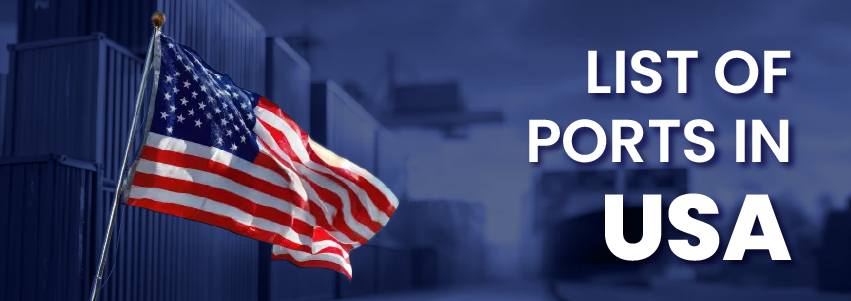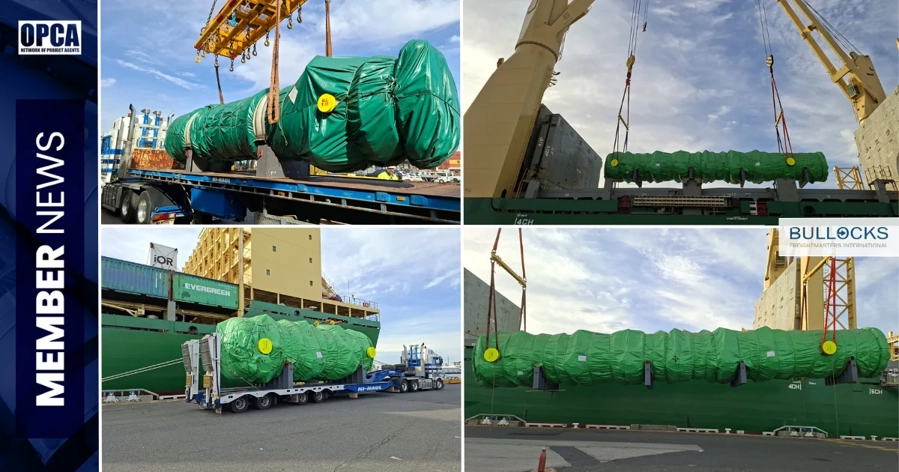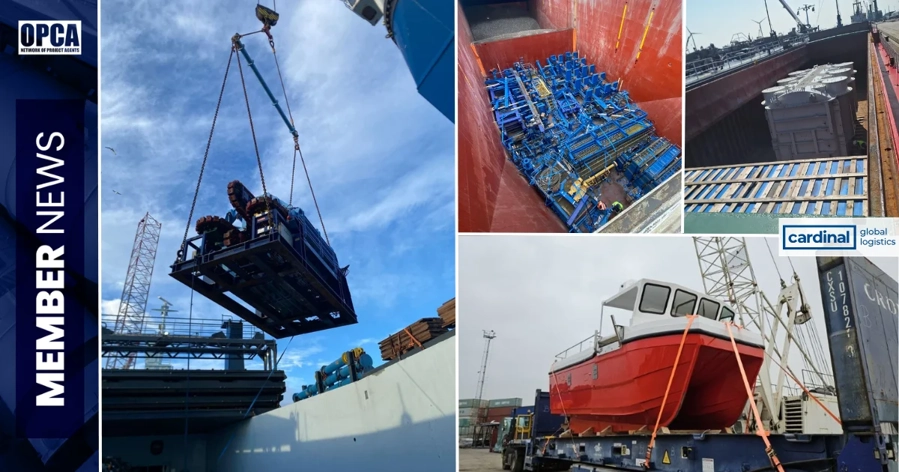List of Ports in the United States
The United States maintains an extensive maritime port system which functions as a vital component of worldwide commercial activities. The United States operates among the busiest ports worldwide which manage both containerized merchandise and bulk materials and cruise ship traffic at its ports. The ports function as vital entry and exit points for international trade because they connect the United States to worldwide shipping centers. This guide examines a list of American ports together with their global trade importance and their essential role in sustaining the U.S. economy.
How Many Ports are There in the USA?
The United States ports of entry number in the hundreds, with over 300 commercial ports located across the country. The country has major ports located on the East Coast and West Coast and Gulf Coast and inland ports. These ports of the United States are located in major cities including Los Angeles, New York and Houston which serve as essential hubs for both domestic and international shipping operations.
Each port functions to serve different purposes which include containerized freight handling and bulk shipment operations and passenger cruise services. The following list includes several major American ports among others:
Port of Los Angeles
The Port of Los Angeles operates as the largest shipping ports in the US while maintaining its position as the busiest container port nationwide. The port functions as a major international shipping center in Southern California where it processes millions of containers each year. The port functions as a vital component of Pacific trade routes which connects the United States to Asia through one of the world's most active major shipping lanes.
Port of Savannah
The Port of Savannah in Georgia represents one of the fastest-growing ports in the United States while being located on the East Coast. The port handles containerized cargo while its strategic position enables it to serve as a trade gateway for Europe Africa and the Mediterranean region. The port has undertaken major infrastructure development to support bigger ships and boost its shipping operations.
Port of New York and New Jersey
The Port of New York and New Jersey operates as the biggest East Coast port complex which functions as a key entry point for European-American trade. The port receives numerous types of cargo including electronics apparel and machinery while serving as a vital hub for U.S. ports that engage in international shipping operations.
Port of Baltimore
The Port of Baltimore stands as one of America's oldest ports situated on the Chesapeake Bay. The port operates as a bulk cargo and vehicle and general cargo terminal with a reputation for efficient goods movement through its facilities.
PortMiami
PortMiami stands as the world's biggest cruise port which supports tourism activities while operating as a vital center for containerized and bulk cargo transportation. The port stands at a strategic location where major shipping routes meet and functions as a vital trade center for Caribbean and Latin American markets.
Port of New Orleans
The Port of New Orleans functions as a vital entry point for American shipping to reach international markets because it sits on the Mississippi River. The port facility receives bulk and breakbulk and containerized cargo while maintaining its position as a major trade center for the Gulf Coast region.
Cleveland
The United States has one of its leading inland ports located in Cleveland on Lake Erie. The inland port operates as a vital trade center for regional commerce because it handles Great Lakes and St. Lawrence Seaway cargo.
Port Everglades
Port Everglades operates in Fort Lauderdale Florida as a major port facility which handles both containerized cargo and cruise ships. The port operates with high efficiency while serving as a major trade hub for South American markets particularly for pharmaceuticals electronics and consumer goods.
Port of Houston
The Port of Houston operates as one of the biggest shipping ports in the United States while managing substantial amounts of energy products and chemicals and bulk commodities. The oil and gas industry depends on this port while it functions as a significant international shipping hub for Gulf Coast routes.
Charleston
The Port of Charleston in South Carolina functions as a vital transportation center which handles both containerized and breakbulk cargo. The port's strategic East Coast location enables it to function as a vital connection between the United States and Europe for goods transported through significant shipping routes.
Port of Seattle
The Port of Seattle functions as a vital trade gateway between the United States and Asia in the Pacific Northwest region. The port receives diverse cargo shipments including automobiles and machinery and consumer goods while its strategic position enables it to control major international shipping routes.
Boston
The Port of Boston operates as one of the oldest ports in the United States while maintaining its position as a significant East Coast shipping hub. The port receives different types of cargo including consumer products machinery and electronics while serving as a gateway for European and Mediterranean trade.
Port Metro Vancouver
Port Metro Vancouver in Canada operates as a vital trade partner for U.S. businesses especially those located on the West Coast although it remains outside U.S. territory. The facility processes a massive volume of cargo which includes bulk commodities together with containers and vehicles.
South Carolina
The ports of South Carolina serve as essential trade centers for East Coast commerce. The ports enable efficient cargo handling and provide strategic highway access which supports imports and exports throughout the U.S. and international markets thus driving international shipping growth in the region.
Port Freeport
The Port of Freeport in Texas operates as a major trade hub for the Gulf Coast region. The port specializes in processing big cargo volumes especially bulk cargo while it continues to increase its capacity to receive bigger ships like the largest North American ports.
Alabama Inland Ports
The inland ports of Alabama function as vital trade centers which connect U.S. ports to worldwide markets through their role as transportation hubs between land and water routes.
Port of Long Beach
The Port of Long Beach in California together with the Port of Los Angeles operates as the biggest port facility in the United States. The port handles containerized cargo while its strategic position makes it one of the busiest American ports for both import and export activities.
Port of Oakland
The Port of Oakland functions as a major transportation center in Northern California which connects the United States to Asia through maritime trade. The port receives diverse cargo shipments including electronics and machinery and automotive parts while maintaining its essential role in worldwide shipping operations.
Port of Virginia
The Port of Virginia operates as one of the East Coast's fastest-growing maritime terminals. The port receives multiple types of cargo including automobiles and consumer products and industrial goods while its strategic position enables essential trade with Europe and the Middle East.
Jacksonville
The Port of Jacksonville in Florida operates as a significant U.S. shipping facility which transports both containerized cargo and automobiles. The port functions as a vital connection between U.S. markets and international destinations especially in the Caribbean and Latin America.
Port of Beaumont
The Port of Beaumont operates as one of the biggest oil and gas shipping ports within the United States. The port serves as a vital transportation hub because it provides specialized cargo-handling services for petroleum products and energy-related goods.
Cincinnati
The city of Cincinnati operates as a vital inland port which provides access to the Mississippi River and the complete U.S. shipping network. The city functions as a vital transportation center for Ohio River cargo while maintaining its position as a fundamental element of the inland waterway system.
Port of Corpus Christi
The Port of Corpus Christi in Texas functions as a major facility for bulk cargo operations including oil and petroleum products. The Gulf Coast location of the port enables it to function as a trade gateway between domestic and international markets.
What are the Busiest Ports in the United States?
Some of the busiest ports in the United States include the Port of Los Angeles, Port of Long Beach, Port of Savannah, and Port of New York and New Jersey. These ports handle the highest volumes of goods, including containerized cargo, bulk commodities, and automobiles. They are also critical to U.S. ports vs American ports, which include ports in Puerto Rico, Hawaii, and other territories.
What are the Largest Ports in the United States?
The Port of Los Angeles stands as the largest shipping port in the U.S. while the Port of Long Beach operates as its closest competitor. The two ports operate as one of the world's biggest port complexes because they handle enormous container volumes and conduct extensive shipping activities. The Port of New York and New Jersey, together with the Port of Savannah and the Port of Houston, represent significant large ports in the United States.
OPCA: Connecting Freight Forwarders Worldwide
The Overseas Project Cargo Association (OPCA) provides businesses with a worldwide network of dependable freight forwarders and logistics partners to deliver secure and efficient shipping solutions. OPCA's partners help businesses move their goods efficiently through both U.S. ports and international shipping routes.
The Overseas Project Cargo Association (OPCA) provides businesses with a broad network of dependable American Freight Forwarders who specialize in logistics services.
_logo.webp)



